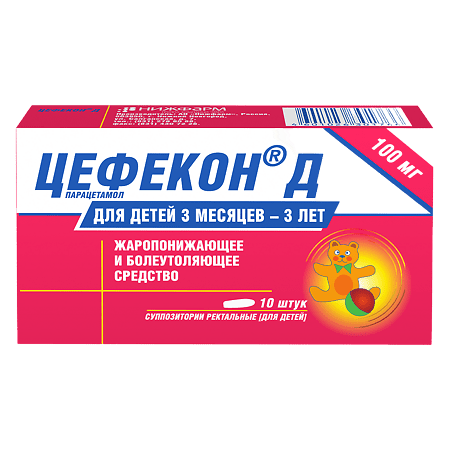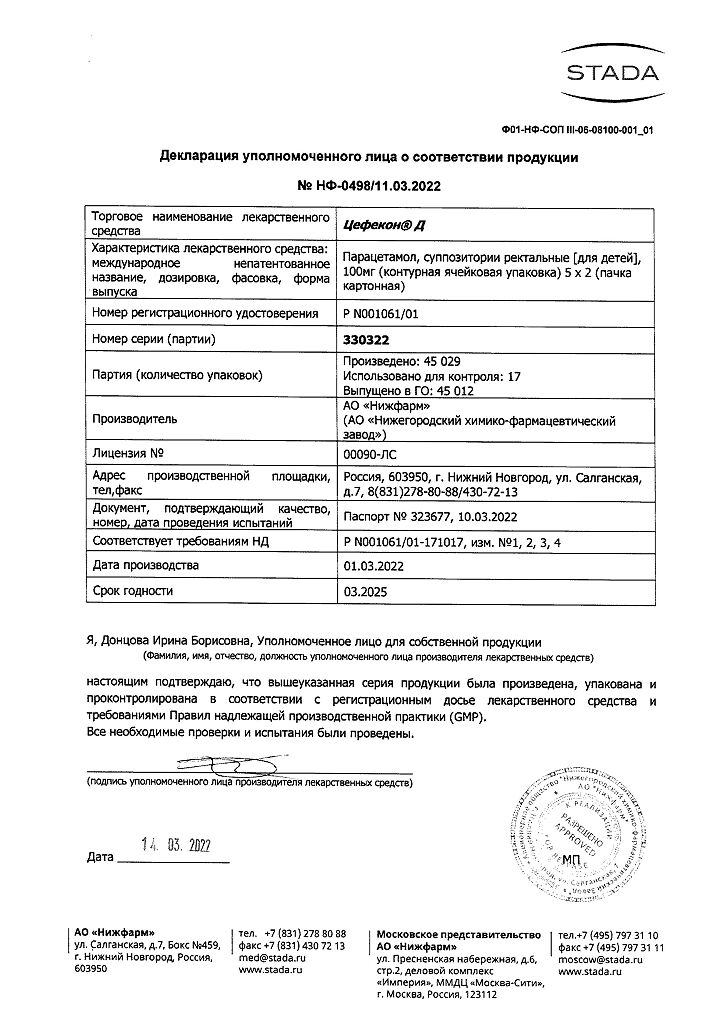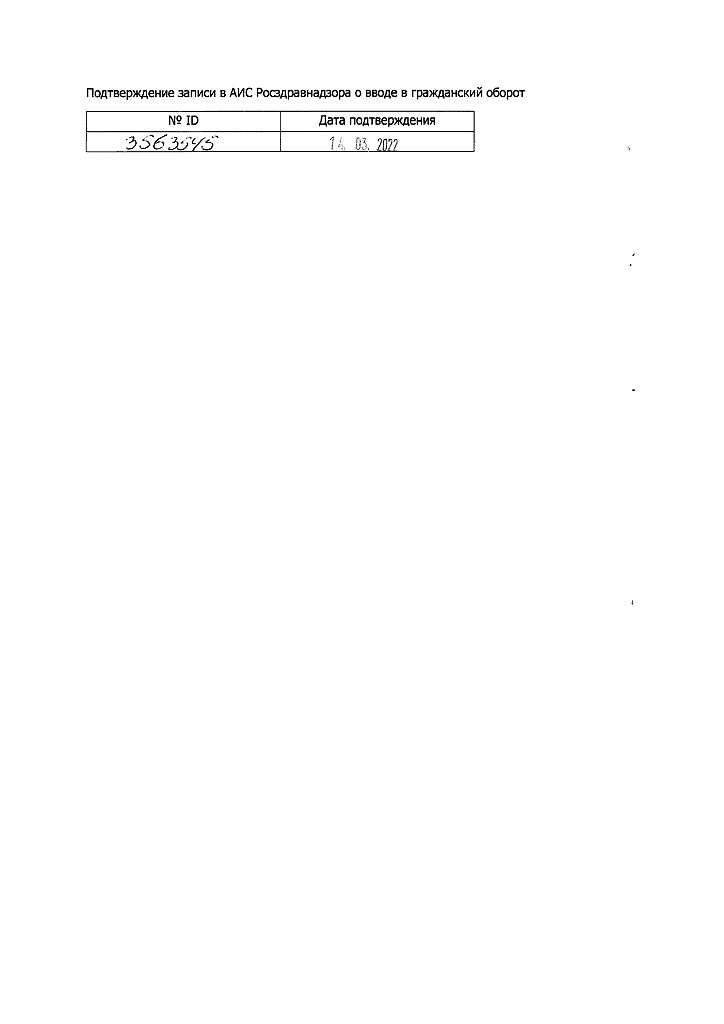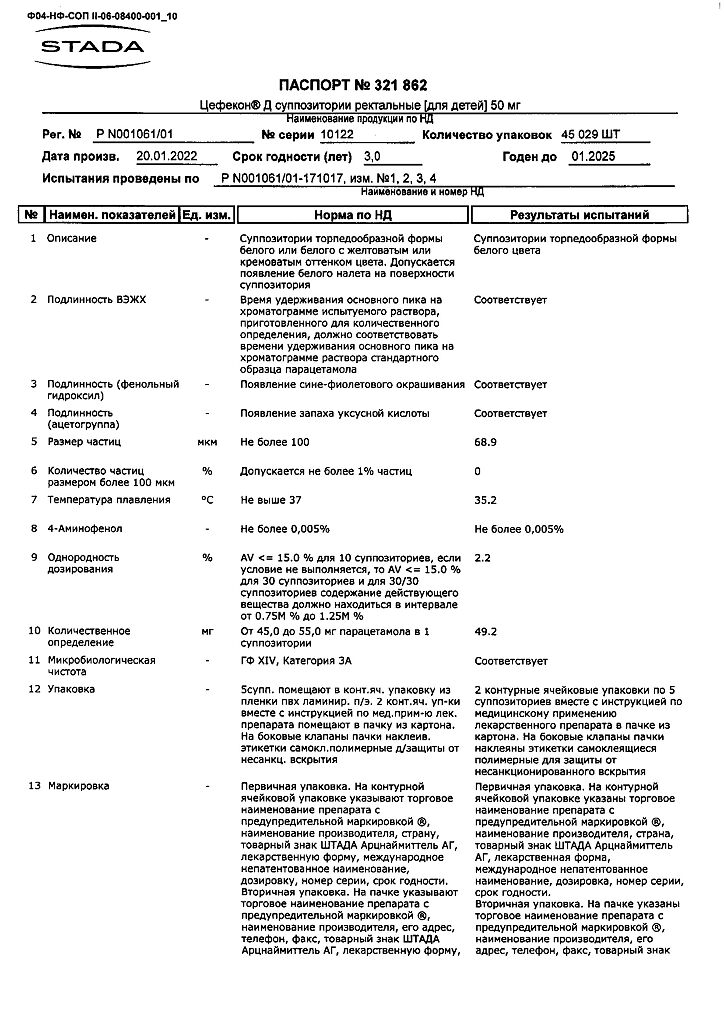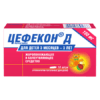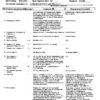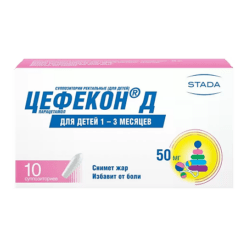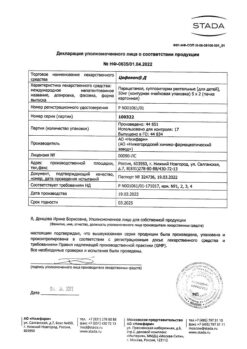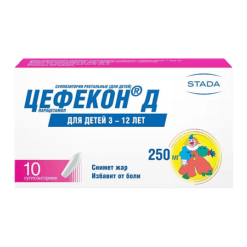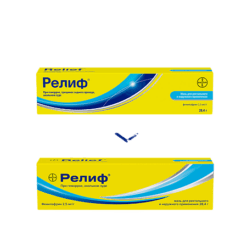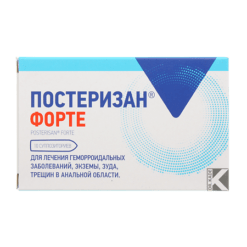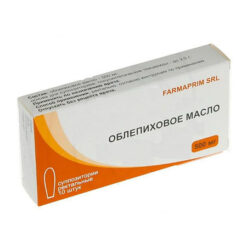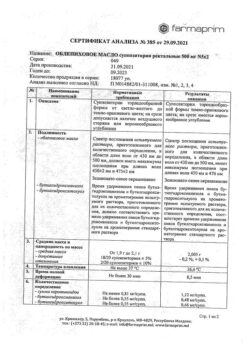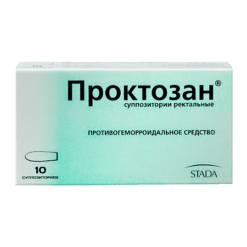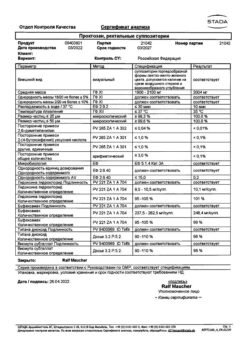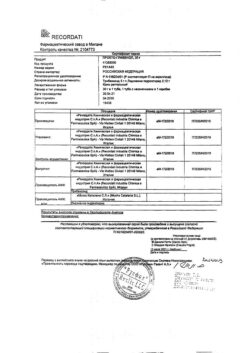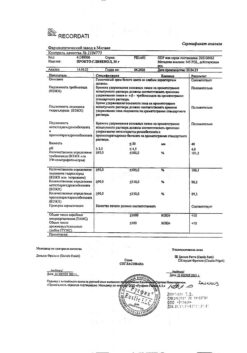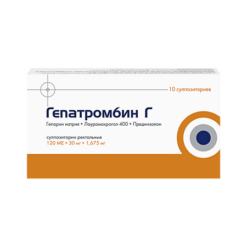No products in the cart.
Cefecon D for children, rectal 100 mg 10 pcs
€1.92 €1.75
Description
Pharmacodynamics:
Paracetamol has analgesic and antipyretic effects. The drug blocks cyclooxygenase in the central nervous system, affecting the centers of pain and thermoregulation.
In inflamed tissues, cellular peroxidases neutralize the effect of paracetamol on cyclooxygenase, which explains the lack of a significant anti-inflammatory effect.
The lack of blocking effect on prostaglandin synthesis in peripheral tissues means it has no negative effect on water-salt metabolism (sodium and water retention) and gastrointestinal mucosa.
Pharmacokinetics:
Absorption is high, quickly absorbed from the gastrointestinal tract. The period of reaching maximum concentration is 30-60 minutes.
It penetrates through the blood-brain barrier. The value of bioavailability in children and infants is similar to that in adults. It is metabolized in the liver.
Half-life period is 2-3 hours; within 24 hours, 85-95% of paracetamol is excreted by kidneys as glucuronides and sulfates; 3% of paracetamol is unchanged.
There is no significant age-related difference in the elimination rate of paracetamol and in the total amount of the drug excreted in the urine.
Indications
Indications
Used in children from 3 months to 12 years as:
antipyretic for acute respiratory diseases, influenza, childhood infections, post-vaccination reactions and other conditions accompanied by an increase in body temperature;
analgesic for pain of mild to moderate intensity, including: headache and toothache, muscle pain, neuralgia, pain from injuries and burns.
In children from 1 to 3 months, a single dose of the drug is possible to reduce fever after vaccination; the use of the drug for all indications is possible only as prescribed by a doctor.
Pharmacological effect
Pharmacological effect
Pharmacodynamics:
Paracetamol has analgesic and antipyretic effects. The drug blocks cyclooxygenase in the central nervous system, affecting the centers of pain and thermoregulation.
In inflamed tissues, cellular peroxidases neutralize the effect of paracetamol on cyclooxygenase, which explains the lack of a significant anti-inflammatory effect.
The absence of a blocking effect on the synthesis of prostaglandins in peripheral tissues determines the absence of a negative effect on water-salt metabolism (sodium and water retention) and the mucous membrane of the gastrointestinal tract.
Pharmacokinetics:
Absorption is high, quickly absorbed from the gastrointestinal tract. The period to achieve maximum concentration is 30-60 minutes.
Penetrates the blood-brain barrier. The amount of bioavailability in children and newborns is similar to that in adults. Metabolized in the liver.
The half-life is 2-3 hours. Within 24 hours, 85-95% of paracetamol is excreted by the kidneys in the form of glucuronides and sulfates, unchanged – 3%.
There is no significant age-related difference in the rate of elimination of paracetamol and in the total amount of the drug excreted in the urine.
Special instructions
Special instructions
If fever persists for more than 3 days and pain persists for more than 5 days, you should consult your doctor.
The simultaneous use of paracetamol with other paracetamol-containing drugs should be avoided, as this may cause an overdose of paracetamol.
When using the drug for more than 5-7 days, peripheral blood counts and the functional state of the liver should be monitored.
Paracetamol distorts laboratory results in the quantitative determination of glucose and uric acid in plasma.
Active ingredient
Active ingredient
Paracetamol
Composition
Composition
One suppository contains:
Active substance:
Paracetamol – 50 mg, 100 mg or 250 mg;
Basics for suppositories:
Solid fat (vitepsol, supposir) – until a suppository weighing 1.25 g is obtained.
Cefekon® D rectal suppositories for children, 50 mg, 100 mg or 250 mg.
5 suppositories in a blister pack;
two blister packs together with instructions for medical use of the drug are placed in a cardboard box.
Contraindications
Contraindications
Hypersensitivity, neonatal period (up to 1 month).
With caution
Renal and liver failure, benign hyperbilirubinemia (including Gilbert’s syndrome), viral hepatitis, alcoholic liver damage, alcoholism, pregnancy, lactation, genetic absence of glucose-6-phosphate dehydrogenase, concomitant use of other paracetamol-containing drugs.
Side Effects
Side Effects
From the gastrointestinal tract: nausea, vomiting, abdominal pain.
Allergic reactions: itching, rash on the skin and mucous membranes, urticaria, Quincke’s edema.
From the hematopoietic organs: anemia, leukopenia, agranulocytosis, thrombocytopenia.
With long-term use in large doses – hepatotoxic and nephrotoxic effects (interstitial nephritis, papillary necrosis), hemolytic anemia.
Interaction
Interaction
Stimulators of microsomal oxidation in the liver (phenytoin, ethanol, barbiturates, flumecinol, rifampicin, phenylbutazone, tricyclic antidepressants), ethanol and hepatotoxic drugs increase
production of hydroxylated active metabolites, which makes it possible to develop severe intoxications, even with a slight overdose.
Inhibitors of microsomal oxidation (including cimetidine) reduce the risk of hepatotoxicity. When taken together with salicylates, the nephrotoxic effect of paracetamol increases.
Combination with chloramphenicol leads to an increase in the toxic properties of the latter. Strengthens the effect of indirect anticoagulants, reduces the effectiveness of uricosuric drugs.
Overdose
Overdose
Symptoms:
during the first 24 hours after administration – pallor of the skin, nausea, vomiting, anorexia, abdominal pain; impaired glucose metabolism, metabolic acidosis.
Symptoms of liver dysfunction may appear 12-48 hours after an overdose.
In case of severe overdose – liver failure with progressive encephalopathy, coma, death;
acute renal failure with tubular necrosis (including in the absence of severe liver damage); arrhythmia, pancreatitis.
The hepatotoxic effect in adults occurs when taking 10 g or more.
Treatment: administration of SH-group donors and precursors for the synthesis of glutathione – methionine 8-9 hours after an overdose and N-acetylcysteine - after 12 hours.
The need for further therapeutic measures (further administration of methionine, intravenous administration of N-acetylcysteine) is determined depending on the concentration of paracetamol in the blood, as well as the time elapsed after its administration.
Storage conditions
Storage conditions
Keep out of the reach of children, at a temperature not exceeding 20°C.
Shelf life
Shelf life
3 years
Manufacturer
Manufacturer
Nizhpharm JSC, Russia
Additional information
| Shelf life | 3 years |
|---|---|
| Conditions of storage | Keep out of reach of children, at a temperature not exceeding 20°C. |
| Manufacturer | Nizhpharm AO, Russia |
| Medication form | rectal suppositories |
| Brand | Nizhpharm AO |
Other forms…
Related products
Buy Cefecon D for children, rectal 100 mg 10 pcs with delivery to USA, UK, Europe and over 120 other countries.

